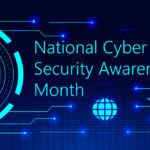
When it comes to enterprise security, a company’s primary focus tends to be on the risk of an external cyberattack. While such concerns are justified, it’s also vital to consider vulnerabilities inside your organization.
95% of all cyberattacks can be traced directly to human error. Therefore, your team’s day-to-day tasks and duties may offer the most significant potential to reinforce your digital security. That’s why it’s so important to implement workstation security best practices.
Internal security best practices are like wearing hard hats on a construction site or buckling your seatbelt before operating a vehicle. They’re simple actions that can impact safety throughout your organization.
If you want to shore up your external defenses, the work starts from within. You can significantly reduce your cybersecurity threat profile by educating your employees about potential cyber threats and then training them to follow proper security protocols.
Today we’ll discuss eight workstation security policy best practices you should implement in your business:
- Require strong passwords
- Backup data regularly
- Practice regular patch management
- Encrypt your data with a VPN
- Install antivirus software
- Use firewalls
- Use MFA
- Limit user permissions
1. Require Strong Passwords
Every workstation should require a password to gain access to the device. The stronger the password, the more secure your business will be.
A weak password is often the easiest way for hackers to gain access and steal sensitive data or interrupt business operations. According to the Verizon Business 2020 Data Breach Investigations Report, 81% of all breaches resulted from stolen or weak passwords.
This is why you should consider implementing password policy best practices, such as:
- Requiring unique passwords for each user account and device
- Requiring passwords of at least 12 characters
- Requiring a mixture of uppercase and lowercase letters, numbers and special characters
- Enforcing a password history that prevents password repetition
- Limiting login time with no “remember me” options
- Sending email notifications about an expiring password
- Forbidding login credential sharing among associates
- Using a password generator and an encrypted password manager
- Resetting administrator passwords periodically
- Setting maximum and minimum password expiration standards with automatic password resets
2. Backup Data Regularly
You should frequently back up any significant employee or company file. That goes for cloud applications and sensitive information as well, which could also be compromised and lost.
If a workstation is compromised, all of its data could be lost. Such information may be irreplaceable, whether emails, documents, spreadsheets, presentations, or videos.
Should your system be infected or compromised, a backup makes it possible to reset the device with little to no interruption to regular operations. This doesn’t just protect you from bad actors. It also limits the potential damage wrought by natural disasters, power failures or equipment crashes.
3. Practice Regular Patch Management
If your business has a brick-and-mortar location, you already know the value of regular patch management. Think of it like routine maintenance – like ensuring elevators are up to code, keeping an eye on roof leaks and upgrading equipment to maintain a safe working environment for your team. Patch management takes this practice to the digital world.
Your company must perform regular patch management to identify and fix bugs or dysfunctional code within an operating system. Either of these issues could expose a workstation to a potential cyberattack.
For many human-caused cyberattacks, hackers target security vulnerabilities in out-of-date, third-party software by deploying viruses, malware or targeted attacks. Once a vulnerability is successfully exploited, a hacker can gain entry to the user’s device. That can then be used as a staging ground to attack the company’s entire network.
By following patch management best practices, you can:
- Improve security by reducing the risk of a breach
- Increase system uptime
- Fix bugs in the software
- Add features and software updates that improve the performance
- Ensure business compliance
4. Encrypt Your Data with a VPN
A VPN shields a user’s privacy and anonymity, especially if a device connects to the internet over a public network. By logging into a VPN, your data will be encrypted, your IP address masked and your location hidden from potential hackers. As Michael Gargiulo, CEO of VPN.com, notes in Forbes:
“Virtual private networks (VPNs) have become popular, particularly with businesses, because they provide advanced security without compromising convenience. They are easy to set up and use and are one of the most affordable cybersecurity options available today.”
If you’re on the hunt for a VPN, some of the top available options include:
- NordVPN
- ExpressVPN
- Hide.me
- TORGuard
- IPVanish
5. Install Antivirus Software
Enterprise-level anti-virus and anti-malware software are valuable tools in your cybersecurity arsenal. Antivirus programs are designed to automatically detect and remove viruses or malicious software from your device, either of which could compromise your cybersecurity efforts and wreak havoc on your equipment.
These solutions should be installed on all systems and devices, including:
- Servers
- Laptops
- Desktops
- Mobile devices
- Internet gateways
- End-user systems
Once installed, you should set these programs to perform periodic scans at least once every 12 hours. If malicious code is identified, these programs can automatically block and quarantine the package or script and then alert system administrators of the threat.
6. Use Firewalls
Within your computer network defenses, a firewall acts as the primary gate to regulate incoming and outgoing traffic flow. Without this barrier and screening mechanism, every data file from an internet source could potentially jeopardize your business.
A firewall leverages pre-established policies and rulesets to identify and analyze each data packet to determine where it’s going, where it came from and whether it should be granted entry. Today, there are several different types of firewalls available, including:
- Stateful inspection firewall
- Proxy firewall
- Next-gen firewalls
- Threat-focused firewalls
- Network address translation firewalls
- Virtual firewalls
7. Use MFA
Even robust password management policies can fail. Multi-factor authentication (MFA) prevents that by requiring that the person identify themselves by more than just a username and password. As we’ve discussed previously, most MFA is based on one of the following factors:
- A knowledge factor – Something that only the employee would know, like a PIN, secondary password or security question
- A possession factor – Something that only the employee has in their possession, like a mobile device, a physical token or an authenticator app
- An inherence factor – Something that’s biologically unique to the employee, such as their fingerprint, voice or retina
By implementing this policy, even if a bad actor were to gain access to an employee’s password, an MFA solution would stop them in their tracks.
8. Limit User Permissions
Setting access restrictions within an active directory is a meaningful way to protect both workstations and your network. For example, a policy of least privilege limits user account access on an as-needed basis.
You can protect high-value data and assets by restricting a user to a minimum level of access. It also reduces your cyber attack surface, limits the spread of malware, improves end-user productivity and streamlines compliance and audits.
Helixstorm: Protecting Your Workstation and Your Business
Do you want to improve your company’s cybersecurity posture?
That effort starts and ends with your employees. As employees represent the most significant security threat to the business, all your other information technology security measures will be in vain if you fail to uphold workstation security.
If you want to learn more about the best practices and strategies you can implement to bolster your cybersecurity, the professionals at Helixstorm have the knowledge and tools you need to thrive. Our Managed IT Services provide user education and accountability services, which include robust training and 24/7 support to protect your human layer from compromise.
Ready for a new kind of information security partner? Schedule a complimentary strategy session with us today.


